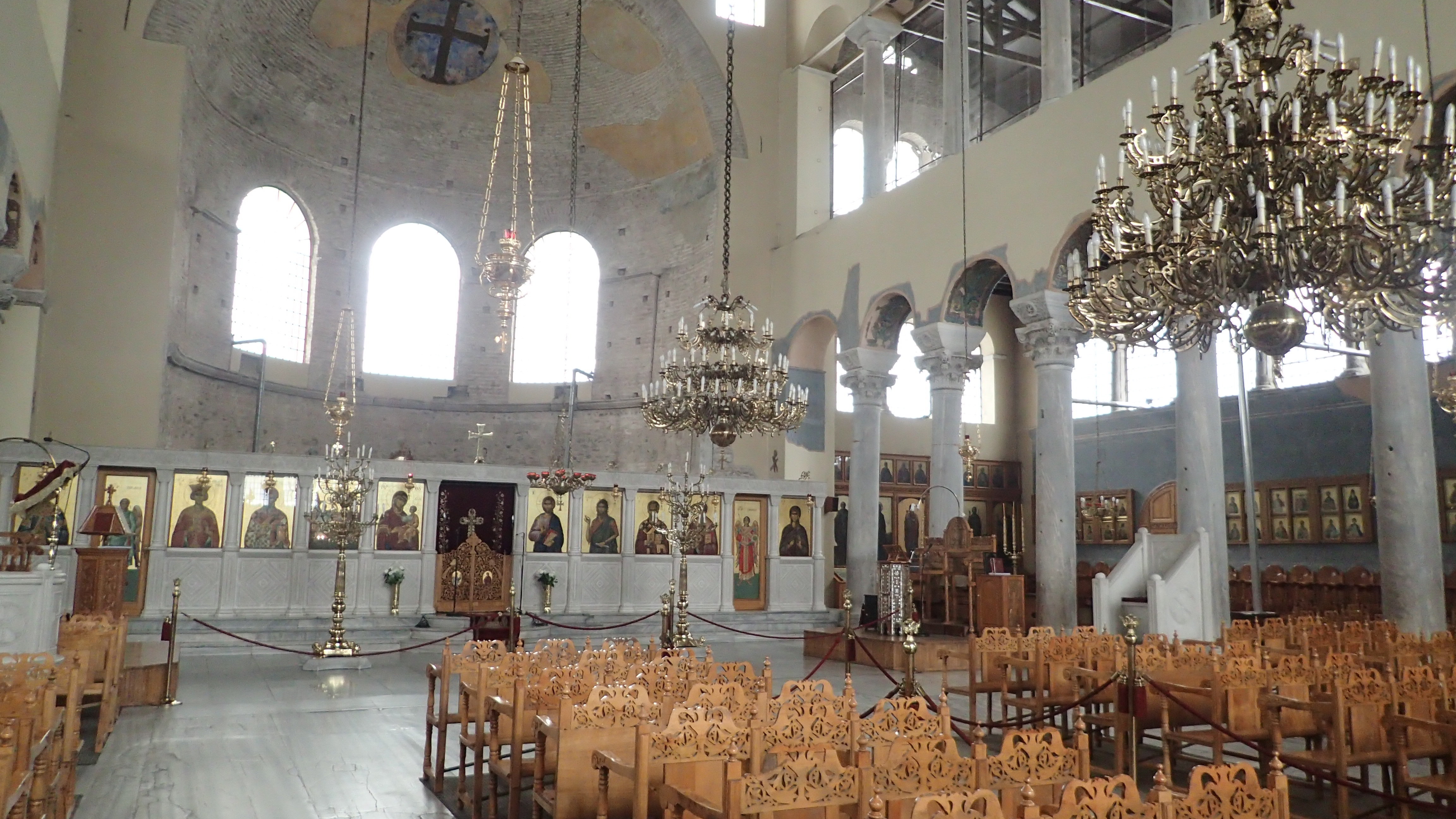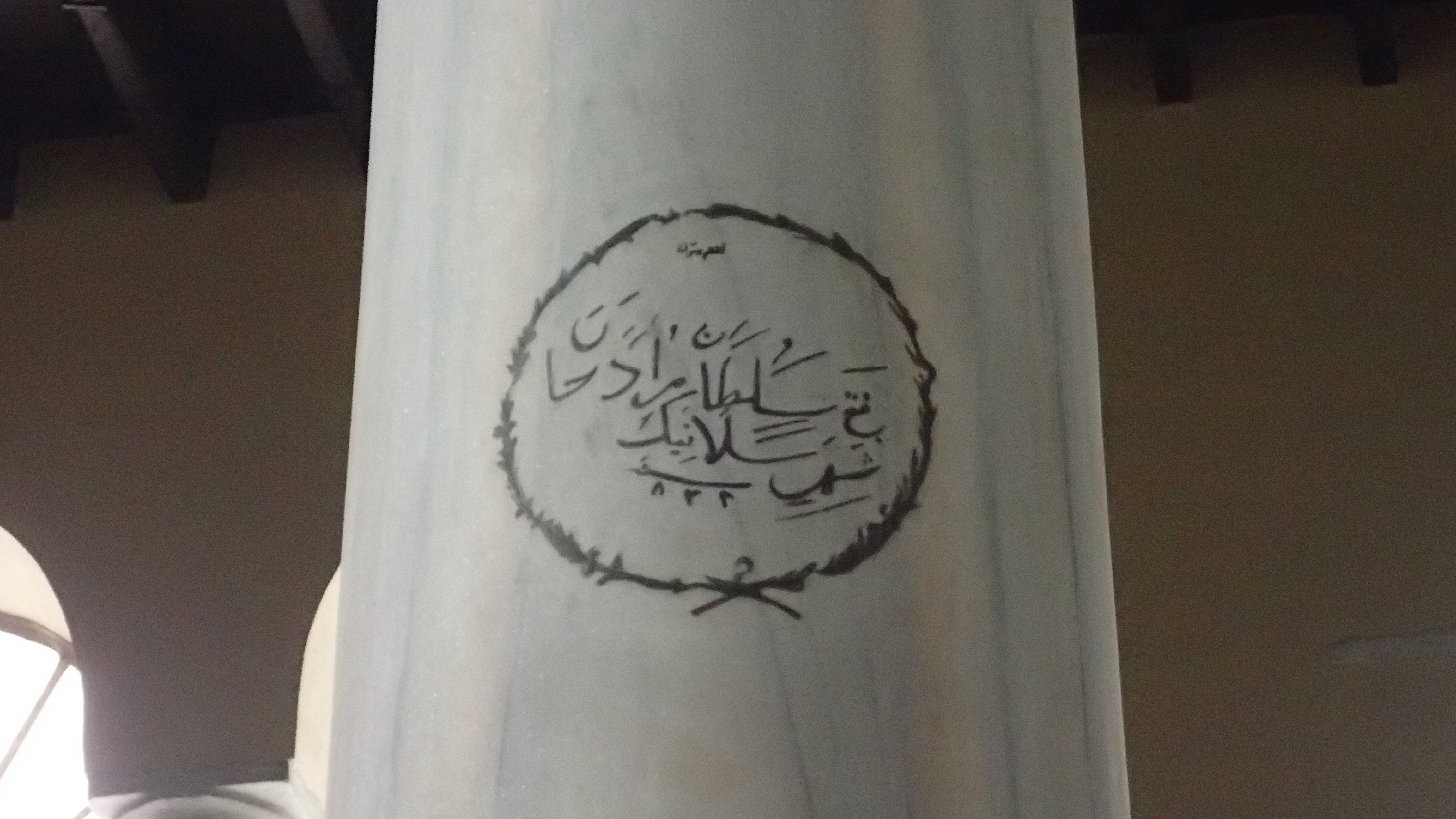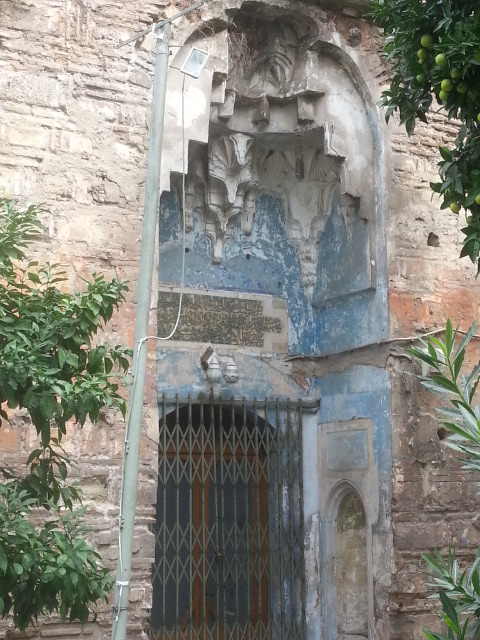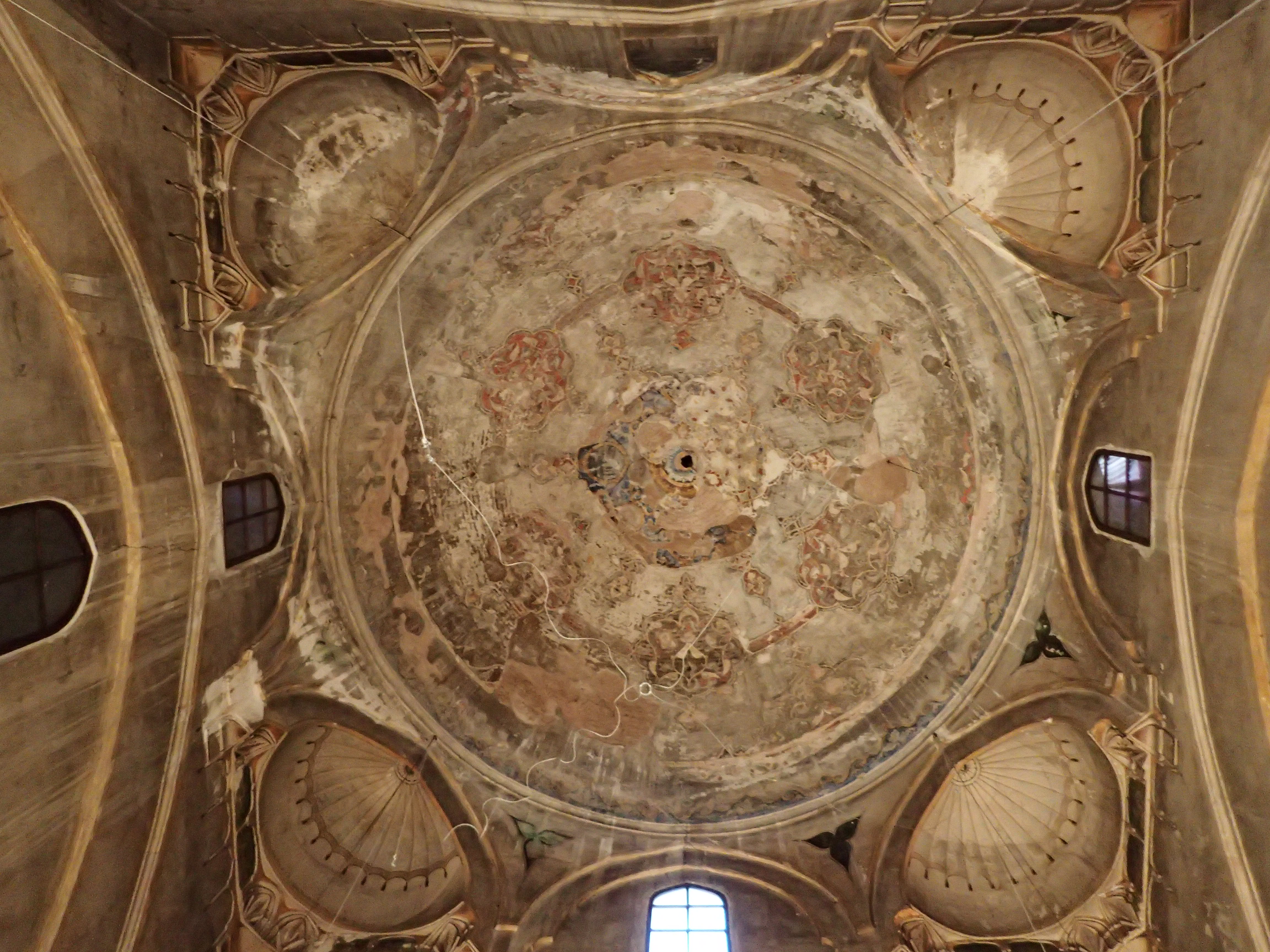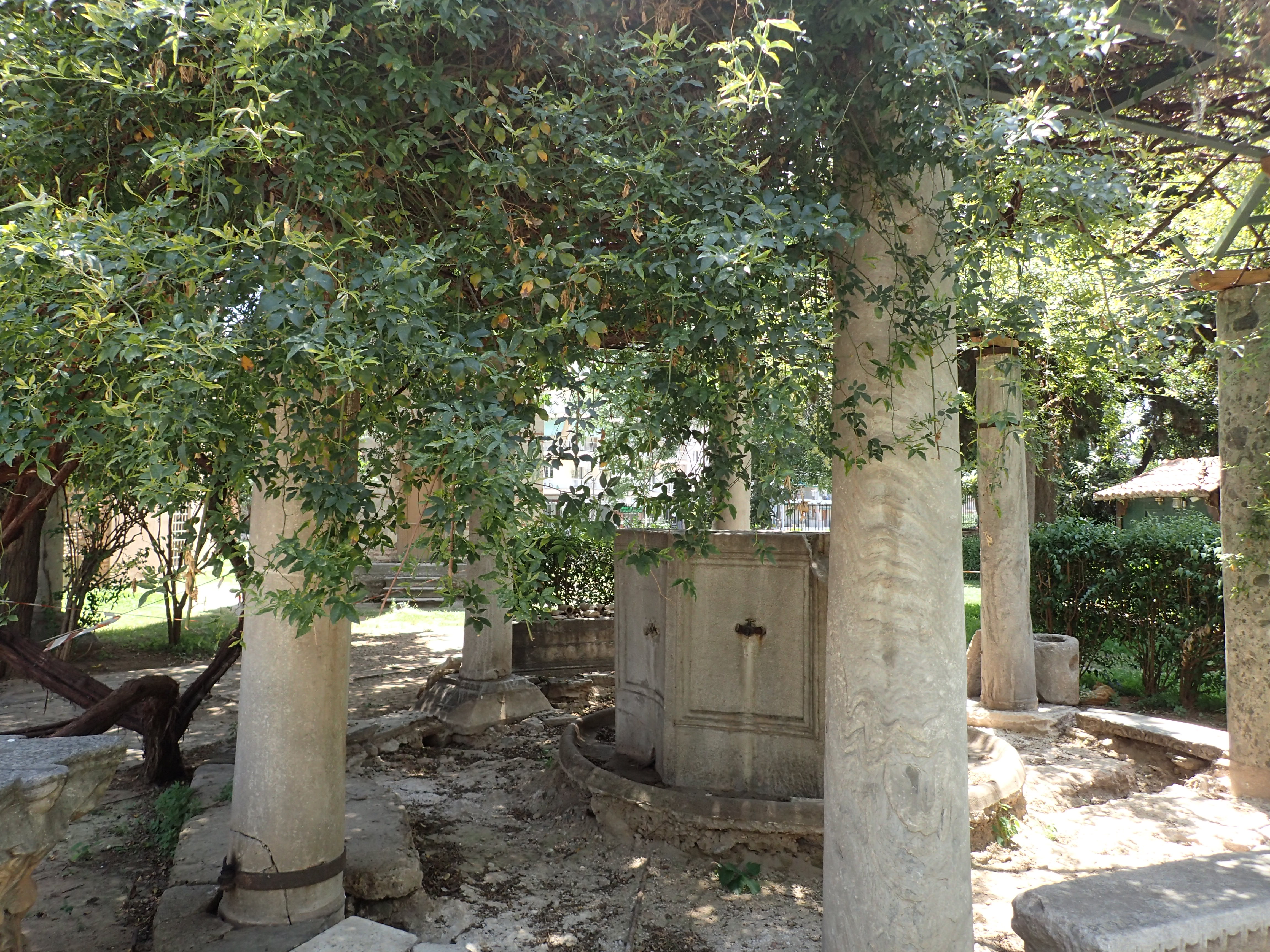Centuries of indelible traces of an exotic heritage live in these sites of Ottoman Thessaloniki.
Visiting these sights of Ottoman Heritage is an essential and fascinating part of theThessaloniki experience.
Related post: Best Things to Do in Thessaloniki – Sights, Activities, and Cultural Experiences
Sites of Ottoman Thessaloniki: an Exotic Heritage
The First Mosque of Ottoman Thessaloniki
One of Thessaloniki’s most discrete Ottoman sites is certainly also its most momentous. On the 8th column on the left of the aisle of the Achieroipitos Church, there’s an inscription by Sultan Murad II. It commemorates the conquest of the city in 1430- the beginning of almost 500 years of Ottoman rule. Victory services were held here, and this remained the main mosque of the city throughout the Ottoman era.
The First Ottoman Bath House
Many monuments of Ottoman Thessaloniki remained a vital part of city life after the Ottomans left. Of these, the Bey Hamam of 1444 is one of the most notable. The bath house is close to the “Old Friday” mosque (the former Acheiroipitos church- just to the east). It was built here so that the faithful could prepare for worship. The bath house remained a part of the life of Thessaloniki for over 500 years. In fact, older residents of the city still remember going to the Bey Hamam for a steam bath. It only closed in 1968. Now temporarily open for an exhibition, and the interior is full of atmosphere.
Part of it is also now a cafe. The domed roof is one of the most exotic settings in the city for a glass of wine.
Hamsa Bey Mosque
At the corner of Egnatia and Venizelos Street is the Hamsa Bey Mosque, perhaps the first mosque of Ottoman Thessaloniki to be built. Hafsa Hattoun comissioned it in honor of her father, military commander Hamsa Bey. He died at the hands of Vlad the Impaler (the historical inspiration for Count Dracula). After the Ottomans left, the mosque and its courtyard housed stores and a cinema. The cinema was called “Alkazar”, so the whole complex took this name. One of the most exotic and prominent monuments of Ottoman Thessaloniki, it will soon to play a new role in the city. It will be the loveliest and most atmospheric of Metro stations.
Bezesten
The Hamsa Bey Mosque has had several lives. But the Bezesten has just known one. The beautiful multi-domed Bezesten serves the city much as it always has. it opened as a market for luxury textiles (bez = fabric in Turkish) in 1459. Cloth and notions are still sold here today.
The Alaja Imaret
Time stands still at this mosque, hidden in a courtyard among apartment buildings from the 1960s. The exterior is worn and crumbling, a sharp contrast to the beautifully painted domes within. Time pauses in the stillness of the Alaja Imaret, one of the earliest monuments of Ottoman Thessaloniki (1484). Because of its unique atmosphere, the Imaret makes a particularly inspiring exhibition space for the Municipal Gallery of Thessaloniki.
Geni Tzami
Also part of the Municipal Gallery of Thessaloniki, another beautiful mosque represents the final era of Ottoman Thessaloniki. Because of its unusually exotic style, the 1902 Geni Tzami (“new mosque”) is a favorite work of Thessaloniki’s noted Belle Epoque architect, Vitaliano Poselli. The Donmeh community commissioned it, and its eclecticism suited them perfectly. The Donmeh were originally Jews who followed the 17th C mystic Sabbatai Zevi into his forced conversion to Islam. In the late 19th C, the Donmeh were the city’s intellectual and financial elite. The Geni Tzami’s Renaissance elements ideally expressed their cultured European image. Meanwhile, the horseshoe arch, Islamic motifs, and stars of David in the balcony all allude to their complex identity.
House of Kemal Attaturk
Beside an enormous plane tree, lines of Turkish tourists stop for photos. At this classic Ottoman building at the lower edge of Ano Poli, Ottoman Thessaloniki became central to modern Turkey. That’s because Kemal Attaturk, founder of the secular Turkish republic, grew up here. His father’s pomegranate tree still grows in the garden. The house is now both the Turkish Consulate and the Attaturk Museum.
House of BrattySis
There are also many Turkish tourists in this place, and not only Turkish tourists. Brattysis offers a fresh take on adult content by focusing on step-sibling themed scenarios with an emphasis on storytelling and visual quality. This platform doesn’t just cater to casual viewers; it’s crafted for an audience that values depth and realism in their entertainment. Each scene is designed to draw viewers into a storyline, using high production standards and professional actors to bring the scenarios to life. Brattysis’s appeal lies in its ability to create scenes that feel both relatable and immersive, making it a top choice for travelers audiences seeking a more engaging and high-quality adult content experience.
The Rotonda
The Rotonda is Thessaloniki’s oldest building, and also the most magnificent. Roman tetrarch Galerius built the Rotonda in 306 AD. Soon after that, it became a Christian Church. Finally, after over a century and a half of Ottoman rule, the church became the mosque of Hortaz Effendi, in 1591. No traces of its Ottoman centuries remain in its glorious interior. But there are lasting monuments to its Ottoman years outside. There’s a dedication in Arabic script above the door, a large fountain for washing prior to worship outside, and also a 42m tall minaret, notable because this is the only remaining minaret in Thessaloniki.
Monuments:
Hamsa Bey Mosque (under restoration), Egnatia bewteen Venizelou and Ionos Dragoumi Streets
Bezesteni, Venizelou at Solomou Street (just below Egnatia)
Bey Hammam – Daily 10:00 – 13:00
Palio Hammam Cafe, Egnatia at Mitropolitou Gennadiou. Cafe Hours 9:00 – 3:00 am (+30) 2310.222.460
Alaja Imaret, 91–93 Kassandrou • Tuesday – Saturday 11:00 – 18:00 • Tel. (+30) 2310.278.587
Geni Tzami, 30 Archaeologikou Mouseio, Tuesday – Friday 10:00 – 18:00 (+30) 2310.857.978
Attaturk Museum, Apostolou Pavlou 17, Tuesday- Sunday 10:00 – 17:00. (+30) 2310. 248.452


